In the fast-paced world of healthcare, dynamic qr codes are quietly revolutionizing how doctors connect with patients. Imagine a patient scanning a code to instantly access their appointment details, care instructions, or a telehealth link—confusion melts away, and trust grows. From my experience in clinical settings, QR codes are a low-effort, high-impact tool that streamline operations and elevate patient experiences. This comprehensive guide explores why doctors should adopt QR codes, practical daily uses, creation tips with QRCodeDynamic, pitfalls to avoid, inspiring real-world examples, and future possibilities. Let’s dive in!
QR codes for doctors simplify access to critical resources like booking systems, patient education, and virtual consultations. They boost engagement, reduce administrative clutter, and amplify marketing efforts. In my view, they’re not just technology—they’re a bridge to better care and stronger patient relationships. This guide covers benefits, applications, step-by-step creation, common mistakes, global success stories, new strategies, and what’s next. Ready to transform your practice?
Why QR Codes Are a Must for Doctors
Doctors face relentless demands: packed schedules, anxious patients, and endless paperwork. QR codes offer a clever solution, delivering instant, contactless access to information that eases these burdens. Consider this: a recent analysis shows that 59% of consumers scan QR codes daily, underscoring how mainstream they’ve become.
I’ve seen how a simple scan can reduce front-desk chaos, clarify care plans, and empower patients to feel in control. It’s like giving your practice a digital superpower—accessible to all, with minimal setup.
By linking to appointment confirmations, telehealth portals, or educational materials, QR codes save time, reduce errors, and enhance patient trust. They’re a low-cost way to modernize your practice, making every interaction smoother and more meaningful.
Key Takeaways:
- ✅ Streamlines communication, reducing missteps.
- ✅ Enhances patient empowerment and trust.
- ✅ Affordable upgrade with big returns.
68% of consumers have used QR codes at least once in the past year, with younger cohorts using them weekly—49% for Gen Z and 51% for Millennials. I find this reassuring—QR codes for doctors are not niche; patients are already comfortable scanning them.
How QR Codes Elevate Daily Medical Practice
From my observations, QR codes seamlessly integrate into routine tasks, making healthcare more responsive and patient-focused:
- Appointment Reminders 📅
Embed QR codes in confirmation texts or emails for easy rescheduling or confirmations. Clinics I’ve worked with report fewer missed visits and less phone tag. - Telemedicine Access 📱
Direct links to virtual visit platforms eliminate tech hiccups, ensuring smooth consultations for all patients. - Patient Education 📚
QR codes on discharge papers linking to videos or guides let patients revisit instructions at home, cutting down on follow-up questions.
Patients of all ages, from tech-savvy youth to older generations with a quick demo, embrace this tool. It’s inspiring to see QR codes turn routine visits into opportunities for empowerment and connection.
Key Takeaways:
- ✅ Frees staff for meaningful patient interactions.
- ✅ Boosts compliance with accessible info.
- ✅ Builds a modern, patient-friendly practice image.
Best Practices for QR Codes in Healthcare
Enhancing Patient Communication
QR codes shine in patient interactions, whether in a bustling hospital or a small practice. Place them on brochures, consent forms, or waiting room signs to link to schedules, FAQs, or health tips. This reduces confusion and fosters partnership. I believe it’s like handing patients a digital lifeline to your services.
Boosting Marketing and Visibility
For smaller clinics, QR codes on business cards, flyers, or social media posts can link to service pages, reviews, or maps. I’ve seen this spark curiosity and loyalty, turning casual visitors into regulars with minimal cost.
Streamlining Administrative Tasks
Internally, use QR codes for staff training, inventory tracking, or schedules. This hidden efficiency frees up energy for patient care, making your team feel supported and focused.
Inspirational Note: “Small tools spark big change. QR codes aren’t just scans—they’re steps toward a more connected, compassionate practice.”
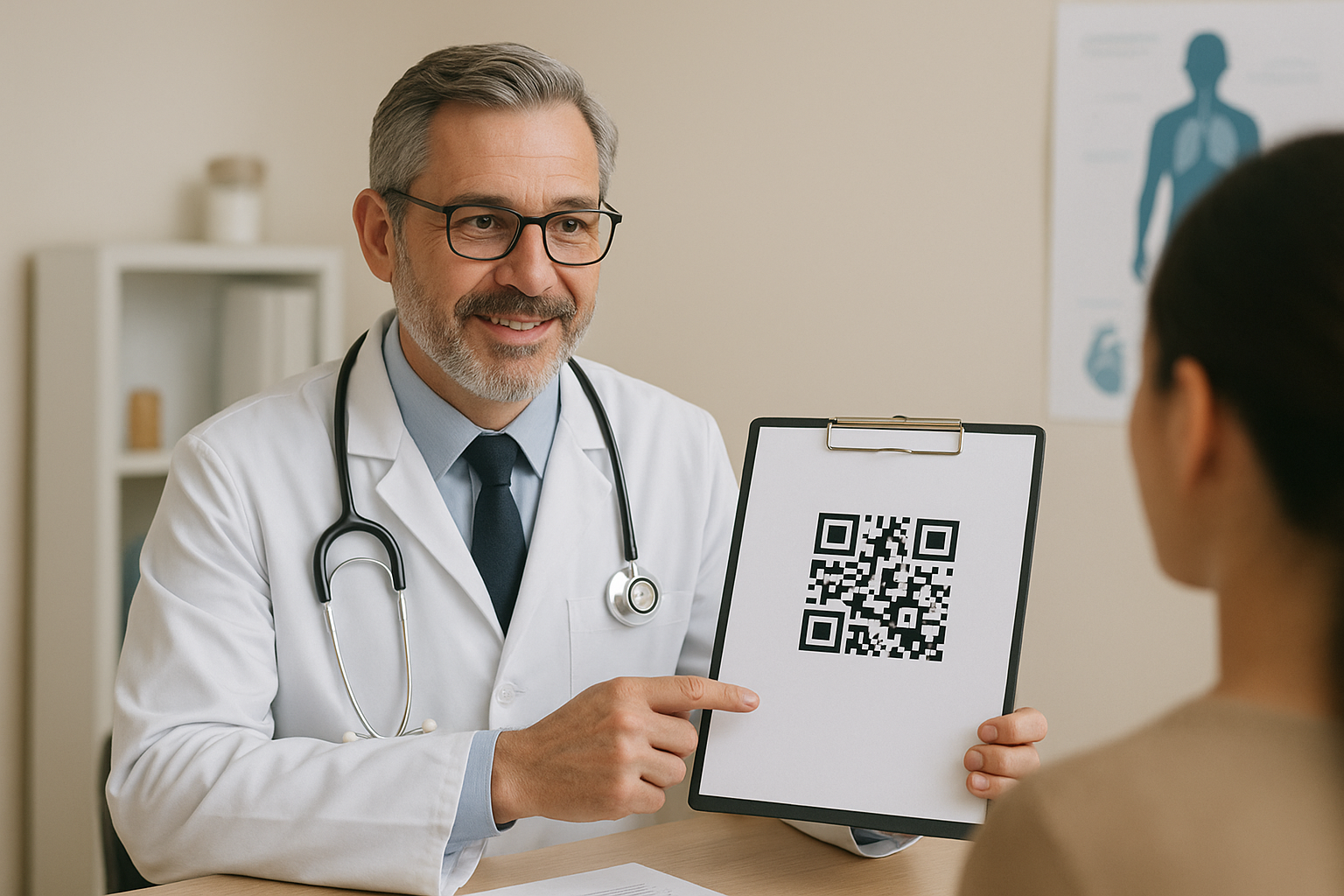
Step-by-Step Guide: Crafting QR Codes with QRCodeDynamic
QRCodeDynamic is my go-to for its simplicity and flexibility. Here’s how to create effective QR codes:
1.Head over to QRCodeDynamic.
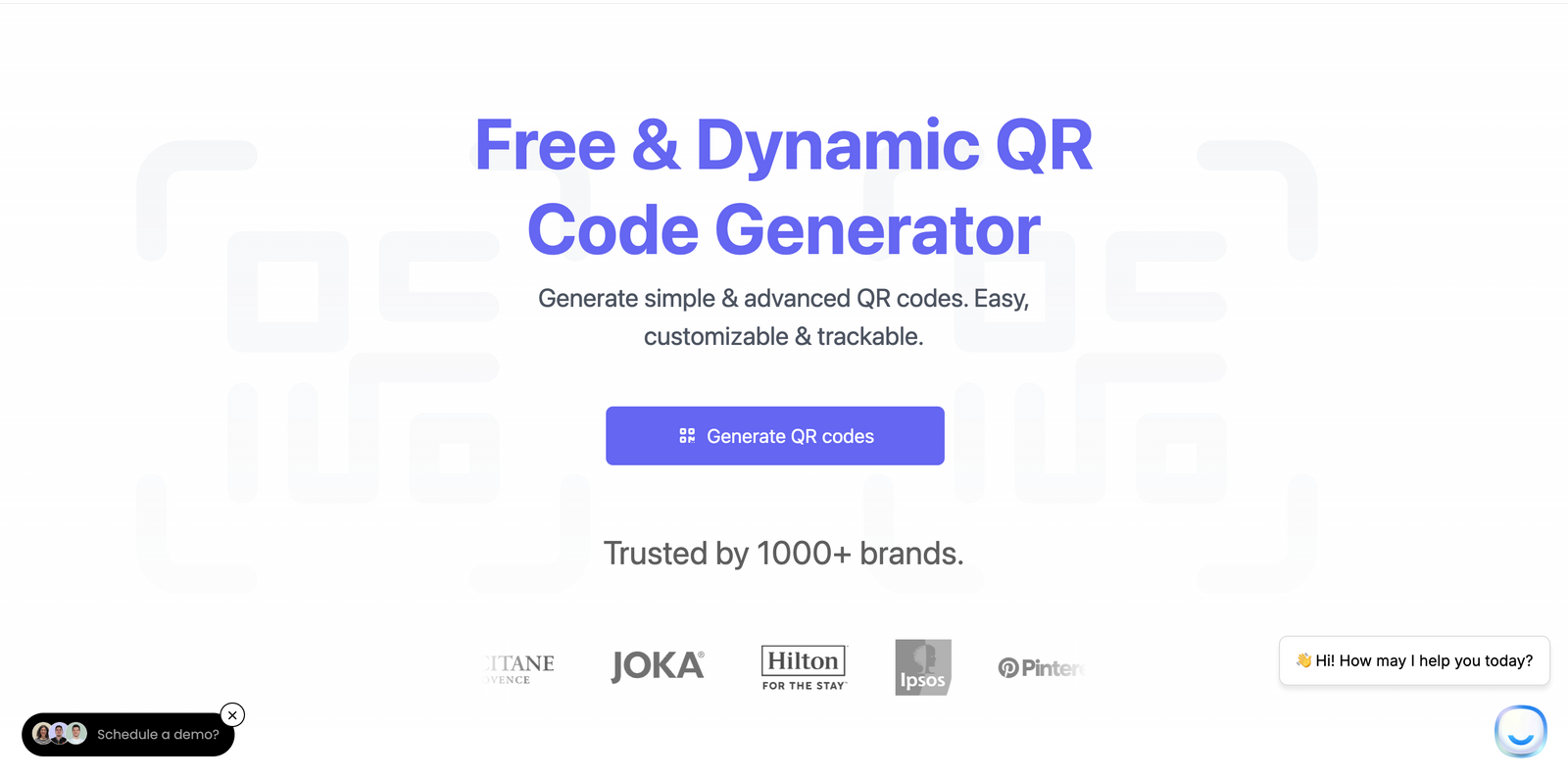
2.Choose the QR type—URL, PDF, form, video, etc.
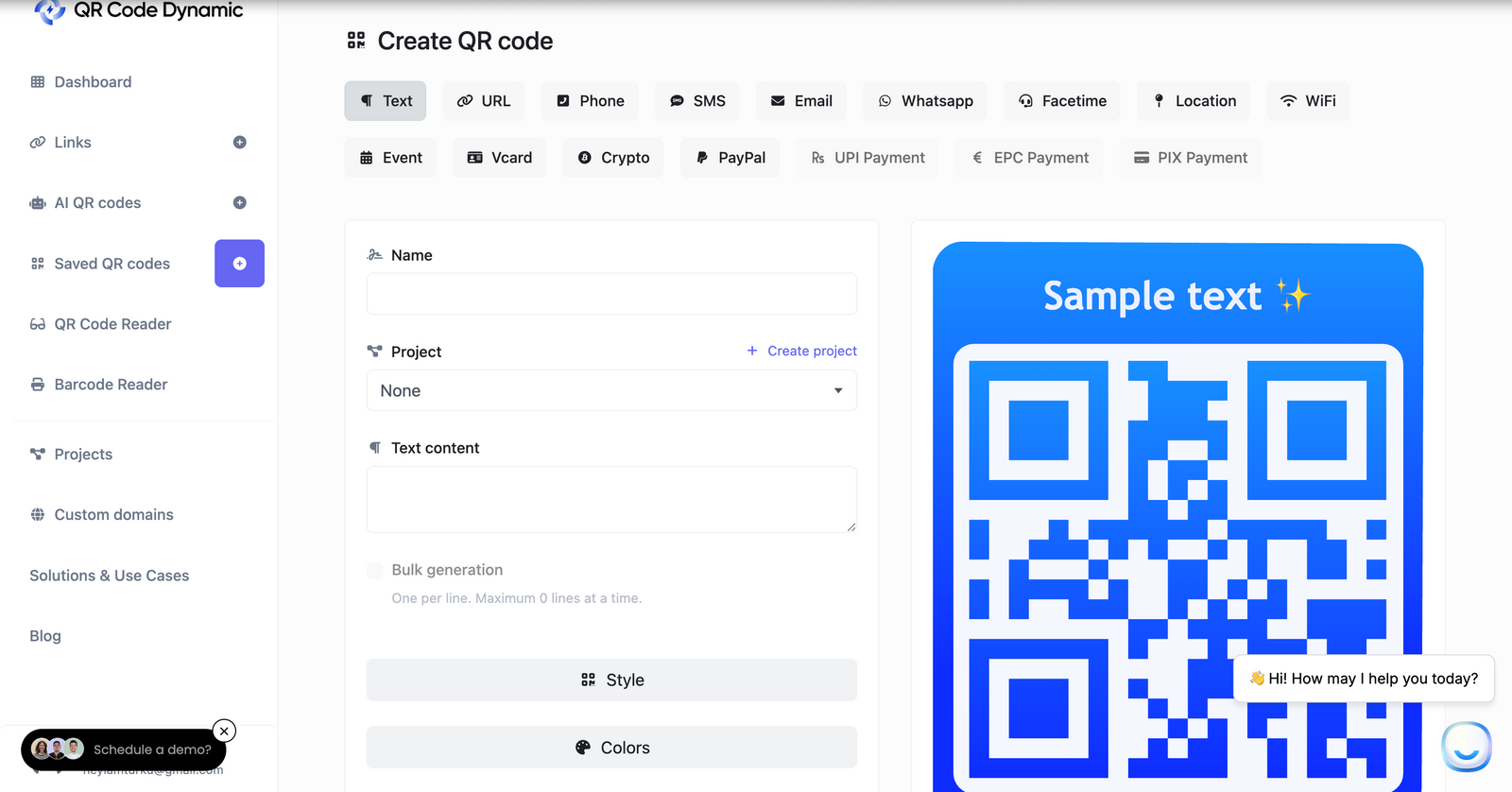
3.Paste your target link.
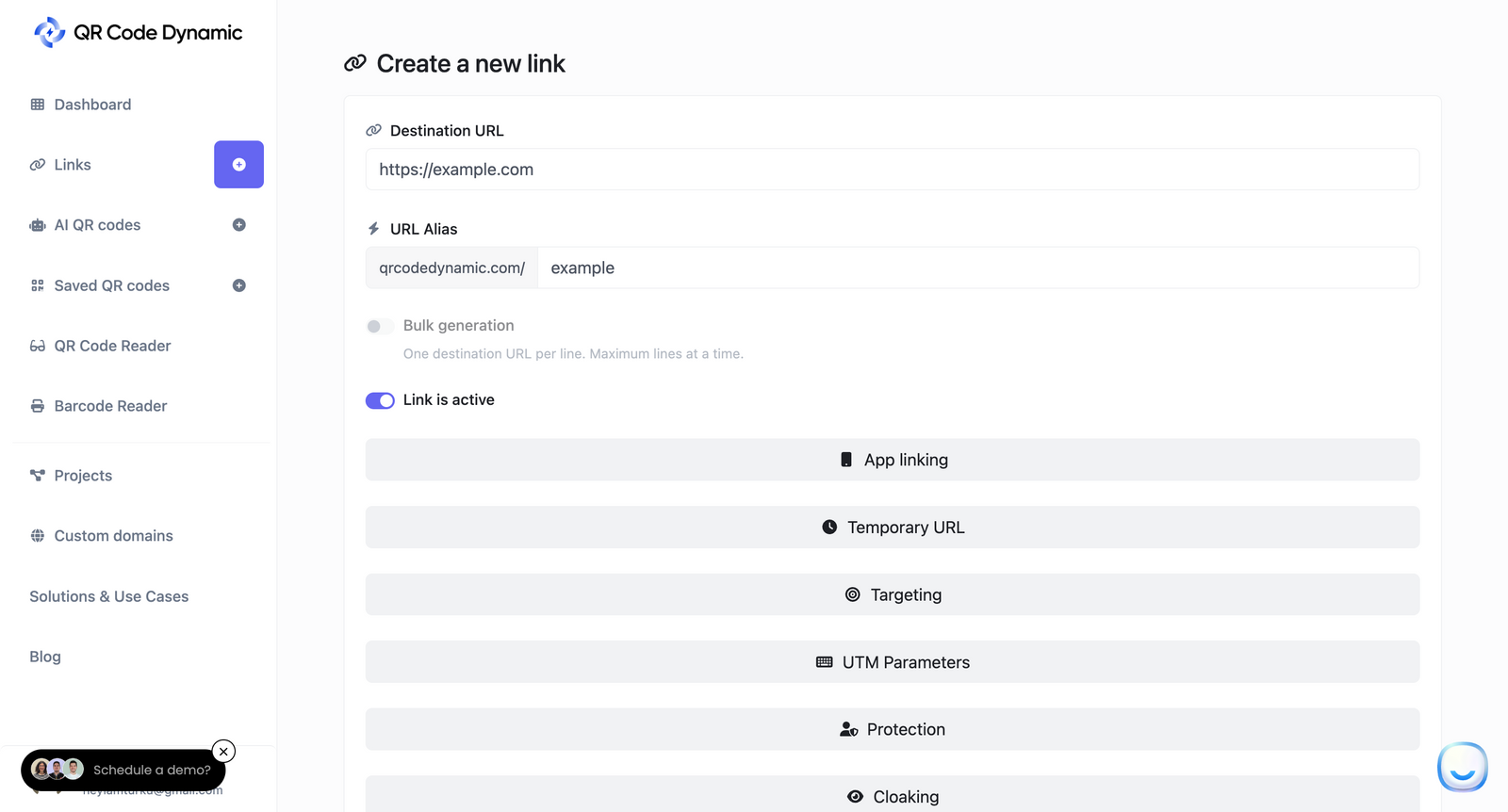
4.Customize its look—colors, logo, frame.
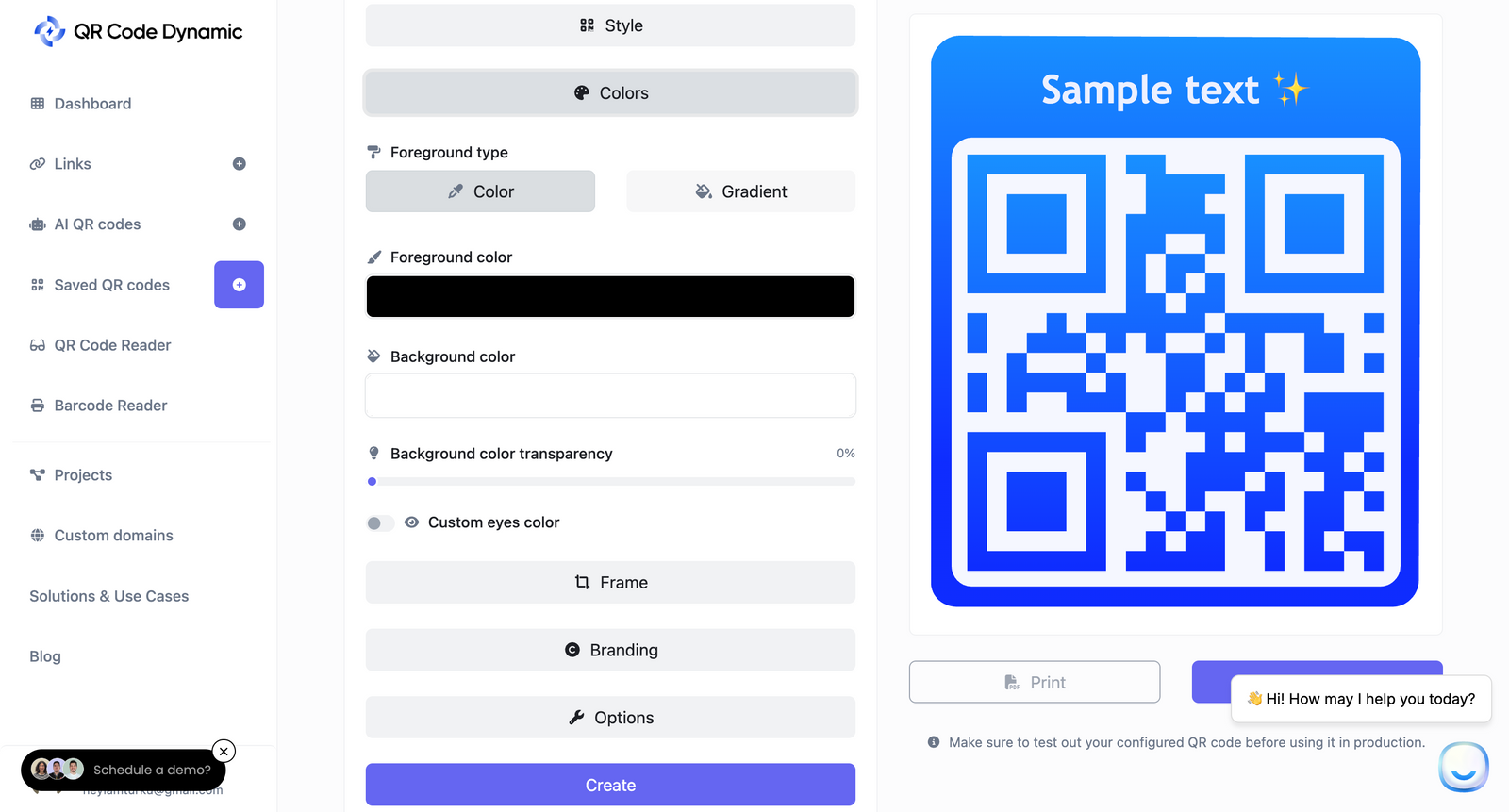
5.Generate and download your code—ready for print and digital use.
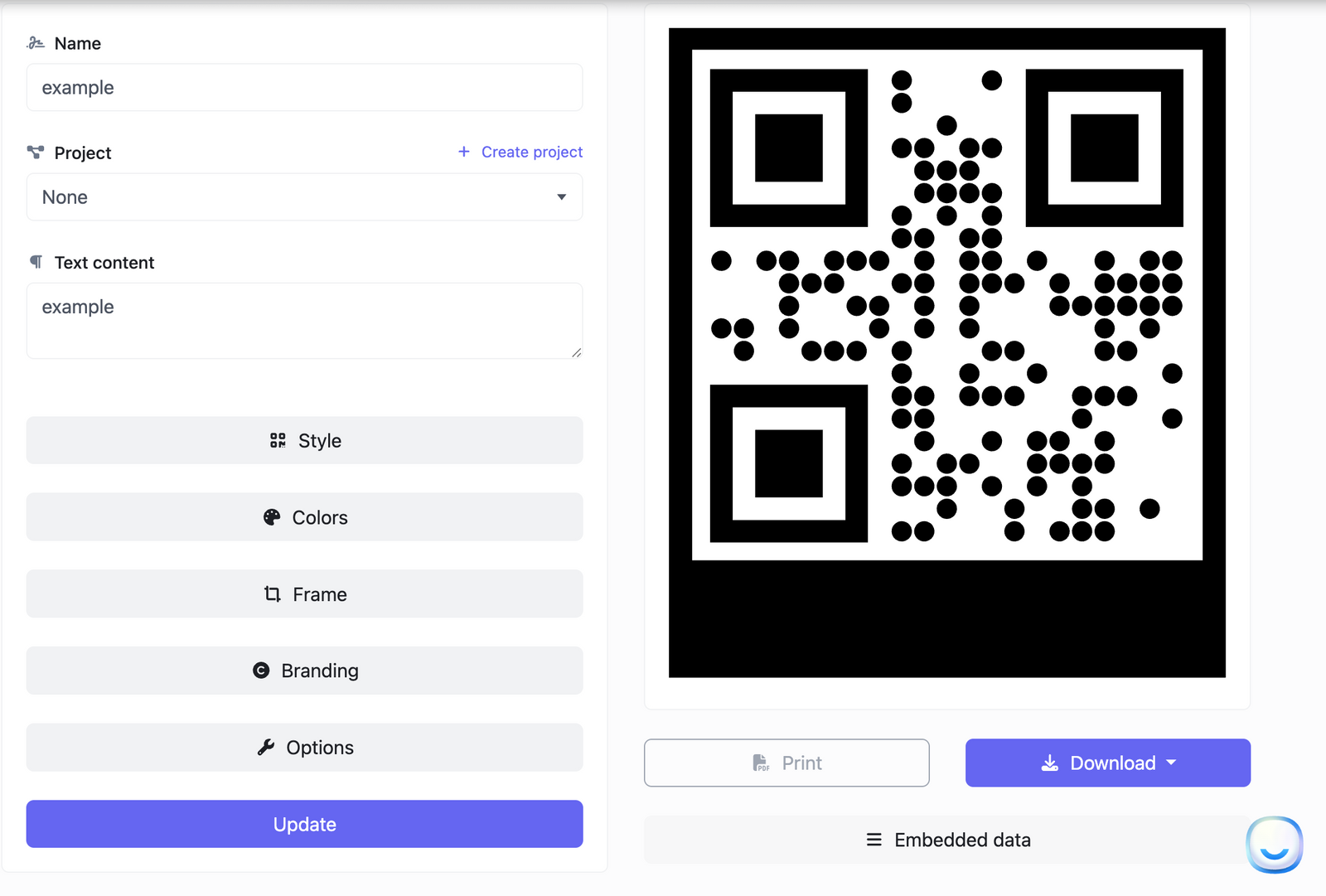
Key Takeaways:
- ✅ Branding makes codes inviting and professional.
- ✅ Testing ensures a seamless patient experience.
- ✅ Updates keep your QR ecosystem reliable.
QR Codes for Community Outreach
QR codes can extend your practice’s impact beyond the clinic. Use them at health fairs to link to wellness resources, vaccination schedules, or screening sign-ups. I’ve seen local clinics use QR codes on flyers to connect with underserved communities, fostering trust and accessibility. This positions your practice as a community cornerstone, inspiring meaningful change.
Key Takeaways:
- ✅ Expands access to care in underserved areas.
- ✅ Strengthens community ties and reputation.
- ✅ Encourages proactive health engagement.
QR Codes for Appointment Check-Ins
QR codes can revolutionize the check-in process, making it faster and contactless. Place a QR code at your clinic’s entrance or reception area that patients scan to check in via their smartphones. This links to a secure form where they confirm their arrival or update details, reducing wait times and paper forms. I’ve seen this approach cut down front-desk congestion, allowing staff to focus on personalized care. It’s inspiring to think of how a simple scan can make patients feel welcomed and valued from the moment they arrive.
Key Takeaways:
- ✅ Speeds up check-ins, easing patient flow.
- ✅ Reduces physical contact for safer visits.
- ✅ Enhances the patient experience with efficiency.
QR Codes for Multilingual Support
In diverse communities, language barriers can hinder care. QR codes can link to translated resources—such as care instructions, consent forms, or appointment details—in multiple languages. For example, a QR code on a flyer could offer Spanish, Mandarin, or Arabic versions of a health guide. I find this deeply meaningful, as it ensures every patient feels understood and included, bridging gaps in access and trust.
Key Takeaways:
- ✅ Makes care accessible to non-English speakers.
- ✅ Builds trust through inclusive communication.
- ✅ Easy to implement with existing materials.
QR Codes for Mental Health Support
Mental health is critical, and QR codes offer a discreet way to help. Link them to calming resources, crisis hotlines, or mindfulness apps. A QR code on a waiting room poster could guide patients to guided breathing exercises, for example. I find this inspiring—it’s a quiet way to support patients in vulnerable moments, showing care that goes beyond the physical.
Key Takeaways:
- ✅ Provides stigma-free, instant support.
- ✅ Integrates into existing materials seamlessly.
- ✅ Enhances holistic care offerings.
Training Staff with QR Codes
Beyond patients, QR codes can transform staff training. Link them to onboarding videos, protocol updates, or compliance guides. In busy clinics, this ensures everyone stays informed without scheduling conflicts. I’ve seen teams embrace this for its flexibility, inspiring a culture of continuous learning and adaptability.
Key Takeaways:
- ✅ Simplifies training for busy schedules.
- ✅ Keeps staff aligned with best practices.
- ✅ Fosters a tech-savvy, engaged team.
QR Codes for Chronic Disease Management
For patients with chronic conditions, QR codes can be a lifeline. Link them to personalized care plans, medication schedules, or support group info. A scan could connect a diabetic patient to diet tips or a heart patient to exercise videos. I’ve seen this approach empower patients to manage their health proactively, reducing stress and hospital visits. It’s a small tool with life-changing potential.
Key Takeaways:
- ✅ Tailors care to individual needs.
- ✅ Reduces strain on clinic resources.
- ✅ Empowers patients for better outcomes.
QR Codes for Patient Feedback and Engagement
Collecting patient feedback is vital for growth, and QR codes make it effortless. Place them on receipts or exit signs to link to quick surveys or review platforms. I’ve seen practices use this to gain insights and boost online ratings, creating a cycle of improvement and trust. This approach inspires patients to feel heard, strengthening their bond with your practice. 🌟
Key Takeaways:
- ✅ Simplifies feedback collection.
- ✅ Enhances online presence and credibility.
- ✅ Builds a patient-centered culture.
Avoiding Common QR Code Mistakes
From my experience, here’s what to avoid:
- Broken Links – Update codes whenever content changes to prevent dead ends.
- Poor Design – Ensure codes are large, clear, and scannable in all lighting.
- Overloaded Content – Link to concise pages or files for quick access.
- No Instructions – Add prompts like “Scan for your care plan!” to guide patients.
Key Takeaways:
- ✅ Proactive checks prevent frustration.
- ✅ Clear design drives engagement.
- ✅ Simple guidance ensures inclusivity.
The Future of QR Codes in Healthcare
QR codes are poised to evolve with AI for tailored health tips, blockchain for secure data sharing, or wearables for real-time monitoring. Imagine patients scanning codes for instant payment options or augmented reality rehab guides. This future excites me—it’s a vision of healthcare that’s proactive, personalized, and deeply human-centered.
Conclusion: Start Your QR Code Journey Today
QR codes for doctors deliver streamlined communication, lighter admin loads, richer patient education, and marketing flair. From my experience, even small implementations spark transformative results. With QRCodeDynamic, setup is a breeze, letting you focus on what matters: caring for patients. Take the leap and transform your practice today!
Final Key Takeaways:
- ✅ Simplifies workflows, saving time and stress.
- ✅ Empowers patients with instant, clear info.
- ✅ Positions your practice as innovative and caring.
FAQ: Your QR Code Questions Answered
Q1: What are QR Codes for Doctors?
Scannable codes linking to medical resources like appointments or care guides—simple yet transformative.
Q2: How do I create effective QR codes?
Use QRCodeDynamic: input your link, customize, test, and deploy. It’s quick and reliable.
Q3: Are QR codes secure for healthcare?
Yes, when linked to secure platforms, they’re safe and effective.
Q4: Do QR codes improve patient satisfaction?
Absolutely—they simplify access, reduce confusion, and build trust.
Q5: What mistakes should I avoid?
Avoid broken links, tiny codes, heavy content, and missing instructions.


